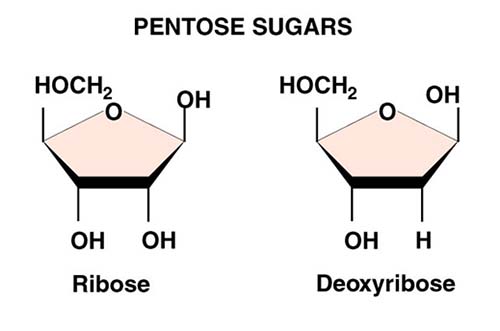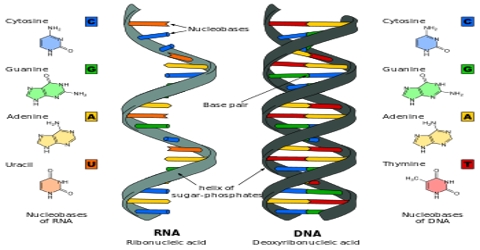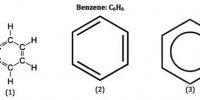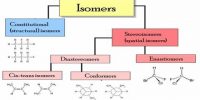Nucleic acid are long thread like macro-molecules of high molecular mass present in the nucleous of all living organisms. Nucleic acids are important because they make up genetic information in living things.
- Nucleic acid was first isolated by F. Meischer from the pus and fish sperm.
- Oswald Avery was the first to point out that nucleic acid is the earner of genetic information.
There are two types of nucleic acid and they are DNA and RNA.
Types of Nucleic Acids:
- Ribonucleic Acid (RNA)
- Deoxyribonucleic acid (DNA)
RNA: May be found in nucleus but mainly occurs in cytoplasm carry out protein synthesis work.
DNA: Occurs in nucleus as well as cell organelles like chloroplast and mitochondria.

Constituents of Nucleic Acid:
Nucleic acid contains the following three constituents:
(i) Pentose sugar (ribose & deoxyribose)
(ii) Nitrogen base
(iii) Phophate group
Pentose sugar: There are two types of Pentose sugar in nucleic acid. These are ribose and deoxyribose.

Nitrogen bases in Nucleic Acid: There are two types of bases in nucleic acid. These bases are purines and pyrimidines bases.
- Purines bases; examples: Adenine (A), Guanine (G)
- pyrimidines bases, Examples: Uracil (U), Thymine (T), Cytosine (C)

Phosphate Group: Phosphate group is present at C-5 of the sugar unit. The repeat units in the nucleic chain are linked through phosphate groups.
- Nucleosides: The Base sugar unit in any nucleic acid chain is called a nucleoside Thus, a nucleoside contains a pentose sugar and a nitrogen base.
- Nucleotides: The base-sugar phosphate unit is called nucleotides. Thus, a nucleotide contains all the three components of nucleic acids.















